Feel like adding some color to your life?
Painting a house tends to be a tiring and stressful endeavor that most people prefer to avoid. But if you have no issue with throwing on the overalls, grabbing your brushes and rollers, and brightening up the walls, then a painting business might be a great fit for you.
Residential and commercial painting jobs are more in-demand of late as many new home and business owners start to take interior design more seriously. A professional and efficient painting service could be a lucrative way to capitalize on your interests while adding some visual zip to your community.
The key is having the knowledge to avoid the common pitfalls and move patiently through the launch and development process, as detailed in this step-by-step guide to starting your own painting business.
Step 1: Decide if the Business Is Right for You
Pros and cons
Every operation has its pros and cons, including a painting business.
Pros
- Simple work – Painting homes can be easily learned and trained
- Low cost – Paints, tools, and equipment are generally inexpensive
- High demand – Many new home and business owners are interested
- Freedom – Make your own hours and choose your clients
- Specialization – Offer creative designs to suit your personality
Cons
- Must satisfy – One poor performance could sink your brand
- Heavy competition – You’re not the only one with this business idea
- Limited growth – Workload limited by staff size
- Hard work – Demanding, fumes-consuming, and often messy labor!
Painting industry trends
Market researcher Fortune Business Insights expects the global paints and coating industry to grow further through 2028 as demand surpasses pre-pandemic levels((https://www.fortunebusinessinsights.com/industry-reports/paints-and-coatings-market-101947)) while market analyst Grand View Research says the US paints and coatings market is also expected to grow steadily through 2027.((https://www.grandviewresearch.com/industry-analysis/us-paints-coatings-market))
Growth in paints and coatings generally leads to a similar expansion in the painting industry.
Industry size and growth
Trends and challenges
The latest trends and customer demands in the painting industry((https://craftjack.com/toolbox/painting-industry-trends/)),according to the home service pros at contractor advisor Craft Jack, include:
- Bold and bright colors for interiors
- Darker neutral colors for smaller projects and trim
- Sustainable “green” materials, such as eco-friendly paint
- More demand for exterior jobs, esp in California, Texas, and Florida
Challenges in painting include:
- Supply chain problems due to the pandemic
- Higher prices due to rising manufacturing costs
What kind of people work in painting?
How much does it cost to start a painting business?
Painting business startup costs range from $2,000 to almost $6,000, according to Step by Step Research, with the average cost being about $4,000. The startup cost is largely determined by your painting equipment, which in turn depends on the type of jobs you plan to tackle. Will you just use rollers and brushes, or employ heavy-duty spraying equipment?
Here’s a list of the items you need to successfully launch your painting business:
- Paint rollers and brushes
- Paint sprayers
- Trays and drop paper
- Ladder
- Caulk and Masking Guns
- Scraping and sealing tools
| Startup Costs | Ballpark Range | Average |
| Tools | $100 - $220 | $160 |
| Paint sprayer | $250 - $1,000 | $625 |
| Ladder | $150 - $450 | $300 |
| Licenses | $200 - $300 | $250 |
| Insurance | $100 - $500 | $300 |
| Website setup | $1,000 - $3,000 | $2,000 |
| Initial marketing budget | $200 - $500 | $350 |
| Total | $2,000 - $5,970 | $3,985 |
How much can you earn from a painting business?
Your income will be dictated by the number and size of jobs you take on, which will determine the materials and equipment you need and the size of your staff.
The average price of a one-day residential paint job ranges from $500 to $2,000, while big commercial jobs can run up to $20,000 or more. Labor and materials generally swallow 60-70% of a painting business’ revenue, with overhead and marketing taking another 20%, leaving you a profit margin of around 10-15%.
At an average of $2,800 each, 15 painting jobs per month would give you annual revenue of $500,000 and a tidy profit of $65,000, assuming a 13% margin. As you gain experience and build your reputation, you could do 30 jobs per month, bringing you annual revenue of about $1 million and a cool $130,000 in profit.
What barriers to entry are there?
Barriers to excelling in the painting business center on your ability to stand out from the competition and eventually expand your operation:
- Competition – Particularly in big cities, painting outfits are thick on the ground
- Expansion – Scaling your business requires training and paying more workers
- Exhaustion – Painting is high effort and often requires long days
Related Business Ideas
If you’re still not sure whether this business idea is the right choice for you, here are some related business opportunities to help you on your path to entrepreneurial success.
Step 2: Hone Your Idea
Now that you know what’s involved in starting a painting business, it’s a good idea to hone your concept in preparation to enter a competitive market.
Why? Identify an opportunity
To stand out in the field of residential and commercial painting, you’ll need to showcase your talent. In order to develop your skills, before officially starting your business it may be worth investing in industry-relevant training. Though it may be easy to get into, painting still requires knowledge and skill, including mastery over the tools. Prepping and sealing surfaces prior to painting often requires expertise, for instance — and one big screw-up could mean a bad Yelp or Google review that potentially dooms your business
As you start your business, it would be wise to perform market research on interior design trends and the colors most in demand. Understanding in advance what your target market wants will also help shape your training, services, and marketing.
What? Determine your products or services
Your service offerings might focus on residential homes or commercial businesses, or interior or exterior jobs. Or you could choose to do it all. Of course, that would require more equipment and training, at a much greater expense.
Ideas for more specialized painter roles might include:
- Restoration – Using paints to restore old buildings to their former state
- Design – Help layout furniture and fixtures within homes or businesses
- Decorating – Study home decor and provide insights for your clients
- Industrial – Provide finishing paints and protections for industrial facilities
- Fine arts – Who knows, maybe your painting could end up in a museum!
How much should you charge for your painting duties?
The prices you charge will vary depending on the work and materials involved. For smaller jobs, like a bedroom, you might change $500 or as much as $2,000. Project resource Home Advisor puts the average cost of an interior residential paint job at $900 to nearly $3,000. For larger projects, including exteriors or multi-day affairs, you might charge $10,000 or more.
Providing accurate estimates for your work is crucial, and will depend on worker hours, material costs, and more. You should structure your jobs to net your desired profit margin.
Once you know your costs, you can use this Step By Step profit margin calculator to determine your mark-up and final price points. Remember, the prices you use at launch should be subject to change if warranted by the market.
Who? Identify your target market
A painting business can target its services toward residential homes or commercial properties, such as storefronts or offices.
For residential painting, your clientele will be less consistent and will require more legwork to gather the necessary leads. Homeowners may only need painting services near move-in or in certain seasons. Your marketing will need to have a large reach in order to consistently supply you with homes to paint throughout the year. Like many modern service providers, online reviews will be a large part of your business’ success in the long run.
For commercial painting, the square-footage for scopes of work will be bigger and the work may be more consistent. Cash flow will be slower as businesses are more likely to pay in slower terms, with 30 days or more of lag time. Additionally, painting for businesses may have additional requirements, legal challenges, or special regulatory requests for the sake of the active business operation you are painting for.
Where? Choose your business premises
In the early stages, you may want to operate your business from home to keep expenses relatively low. But as your business grows and operations intensify, you will likely need to hire workers for various roles and maybe rent out an office or storage facility. You can find commercial space to rent in your area on Craigslist, Crexi, and Commercial Cafe.
When choosing a commercial space, you may want to follow these rules of thumb:
- Central location accessible via public transport
- Ventilated and spacious, with good natural light
- Flexible lease that can be extended as your business grows
- Ready-to-use space with no major renovations or repairs needed
Step 3: Brainstorm a Business Name
Your business name is your business identity, so choose one that encapsulates your objectives, services, and mission in just a few words. You probably want a name that’s short and easy to remember, since much of your business, and your initial business in particular, will come from word-of-mouth referrals.
Here are some ideas for brainstorming your business name:
- Short, unique, and catchy names tend to stand out
- Names that are easy to say and spell tend to do better
- The name should be relevant to your product or service offerings
- Ask around — family, friends, colleagues, social media — for suggestions
- Including keywords, such as “paints” or “painter”, boosts SEO
- Choose a name that allows for expansion: “Jim’s Bakery” over “Jim’s Cookies”
- Avoid location-based names that might hinder future expansion
- Use online tools like the Step by Step business name generator. Just type in a few keywords and hit “generate” and you’ll have dozens of suggestions at your fingertips.
Once you’ve got a list of potential names, visit the website of the US Patent and Trademark Office to make sure they are available for registration and check the availability of related domain names using our Domain Name Search tool. Using “.com” or “.org” sharply increases credibility, so it’s best to focus on these.
Finally, make your choice among the names that pass this screening and go ahead with domain registration and social media account creation. Your business name is one of the key differentiators that set your business apart. Once you pick your company name, and start with the branding, it is hard to change the business name. Therefore, it’s important to carefully consider your choice before you start a business entity.
Step 4: Create a Business Plan
Every business needs a plan. This will function as a guidebook to take your startup through the launch process and maintain focus on your key goals. A business plan also enables potential partners and investors to better understand your company and its vision:
- Executive Summary: Brief overview of the entire business plan; should be written after the plan is complete.
- Business Overview: Overview of the company, vision, mission, ownership, and corporate goals.
- Product and Services: Describe your products and services in detail.
- Market Analysis: Assess market trends such as variations in demand and prospects for growth, and do a SWOT analysis.
- Competitive Analysis: Analyze main competitors, assess their strengths and weaknesses, and create a list of the advantages of your services.
- Sales and Marketing: Examine your companies’ unique selling propositions (USPs) and develop sales, marketing, and promotional strategies.
- Management Team: Overview of management team, detailing their roles and professional background, along with a corporate hierarchy.
- Operations Plan: Your company’s operational plan includes procurement, office location, key assets and equipment, and other logistical details.
- Financial Plan: Three years of financial planning, including startup costs, break-even analysis, profit and loss estimates, cash flow, and balance sheet.
- Appendix: Include any additional financial or business-related documents.
If you’ve never created a business plan, it can be an intimidating task. You might consider hiring a business plan specialist at Fiverr to create a top-notch business plan for you.
Step 5: Register Your Business
Registering your business is an absolutely crucial step — it’s the prerequisite to paying taxes, raising capital, opening a bank account, and other guideposts on the road to getting a business up and running.
Plus, registration is exciting because it makes the entire process official. Once it’s complete, you’ll have your own business!
Choose where to register your company
Your business location is important because it can affect taxes, legal requirements, and revenue. Most people will register their business in the state where they live, but if you are planning to expand, you might consider looking elsewhere, as some states could offer real advantages when it comes to painting services.
If you’re willing to move, you could really maximize your business! Keep in mind, it’s relatively easy to transfer your business to another state.
Choose your business structure
Business entities come in several varieties, each with its pros and cons. The legal structure you choose for your painting business will shape your taxes, personal liability, and business registration requirements, so choose wisely.
Here are the main options:
- Sole Proprietorship – The most common structure for small businesses makes no legal distinction between company and owner. All income goes to the owner, who’s also liable for any debts, losses, or liabilities incurred by the business. The owner pays taxes on business income on his or her personal tax return.
- General Partnership – Similar to a sole proprietorship, but for two or more people. Again, owners keep the profits and are liable for losses. The partners pay taxes on their share of business income on their personal tax returns.
- Limited Liability Company (LLC) – Combines the characteristics of corporations with those of sole proprietorships or partnerships. Again, the owners are not personally liable for debts.
- C Corp – Under this structure, the business is a distinct legal entity and the owner or owners are not personally liable for its debts. Owners take profits through shareholder dividends, rather than directly. The corporation pays taxes, and owners pay taxes on their dividends, which is sometimes referred to as double taxation.
- S Corp – An S-Corporation refers to the tax classification of the business but is not a business entity. An S-Corp can be either a corporation or an LLC, which just needs to elect to be an S-Corp for tax status. In an S-Corp, income is passed through directly to shareholders, who pay taxes on their share of business income on their personal tax returns.
We recommend that new business owners choose LLC as it offers liability protection and pass-through taxation while being simpler to form than a corporation. You can form an LLC in as little as five minutes using ZenBusiness’s online LLC formation service. They will check that your business name is available before filing, submit your articles of organization, and answer any questions you might have.
Step 6: Register for Taxes
The final step before you’re able to pay taxes is getting an Employer Identification Number, or EIN. You can file for your EIN online or by mail or fax: visit the IRS website to learn more. Keep in mind, if you’ve chosen to be a sole proprietorship you can simply use your social security number as your EIN.
Once you have your EIN, you’ll need to choose your tax year. Financially speaking, your business will operate in a calendar year (January–December) or a fiscal year, a 12-month period that can start in any month. This will determine your tax cycle, while your business structure will determine which taxes you’ll pay.
It is important to consult an accountant or other professional to help you with your taxes to ensure you are completing them correctly.
Step 7: Fund your Business
Securing financing is your next step and there are plenty of ways to raise capital:
- Bank loans: This is the most common method, but getting approved requires a rock-solid business plan and strong credit history.
- SBA-guaranteed loans: The Small Business Administration can act as guarantor, helping gain that elusive bank approval via an SBA-guaranteed loan.
- Government grants: A handful of financial assistance programs help fund entrepreneurs. Visit Grants.gov to learn which might work for you.
- Venture capital: Offer potential investors an ownership stake in exchange for funds, keeping in mind that you would be sacrificing some control over your business.
- Friends and Family: Reach out to friends and family to provide a business loan or investment in your concept. It’s a good idea to have legal advice when doing so because SEC regulations apply.
- Crowdfunding: Websites like Kickstarter and Indiegogo offer an increasingly popular low-risk option, in which donors fund your vision. Entrepreneurial crowdfunding sites like Fundable and WeFunder enable multiple investors to fund your business.
- Personal: Self-fund your business via your savings or the sale of property or other assets.
Bank and SBA loans are probably the best options, other than friends and family, for funding a painting business.
Step 8: Apply for Licenses/Permits
Starting a painting business requires obtaining a number of licenses and permits from local, state, and federal governments.
Federal regulations, licenses, and permits associated with starting your business include doing business as (DBA), health licenses and permits from the Occupational Safety and Health Administration (OSHA), trademarks, copyrights, patents, and other intellectual properties, as well as industry-specific licenses and permits.
You may also need state-level and local county or city-based licenses and permits. The license requirements and how to obtain them vary, so check the websites of your state, city, and county governments or contact the appropriate person to learn more.
You could also check this SBA guide for your state’s requirements, but we recommend using MyCorporation’s Business License Compliance Package. They will research the exact forms you need for your business and state and provide them to ensure you’re fully compliant.
This is not a step to be taken lightly, as failing to comply with legal requirements can result in hefty penalties.
If you feel overwhelmed by this step or don’t know how to begin, it might be a good idea to hire a professional to help you check all the legal boxes.
Step 9: Open a Business Bank Account
Before you start making money, you will need a place to keep it, and that requires opening a bank account.
Keeping your business finances separate from your personal account makes it easy to file taxes and track your company’s income, so it’s worth doing even if you’re running your painting business as a sole proprietorship. Opening a business bank account is quite simple, and similar to opening a personal one. Most major banks offer accounts tailored for businesses — just inquire at your preferred bank to learn about their rates and features.
Banks vary in terms of offerings, so it’s a good idea to consider your options to choose the best plan that works for you. Once you choose your bank, you’ll need to bring your EIN (or Social Security Number if you decide on a sole proprietorship), articles of incorporation, and any other legal documentation that proves your business is registered.
Step 10: Get Business Insurance
Business insurance is an area that often gets overlooked yet it could be vital to your success as an entrepreneur. Insurance protects you from unexpected events that can have a devastating impact on your business.
Here are some types of insurance to consider:
- General liability: The most comprehensive type of insurance, acting as a catch-all for many business elements that require coverage. If you get just one kind of insurance, this is it. It even protects against bodily injury and property damage.
- Business Property: Provides coverage for your equipment and supplies.
- Equipment Breakdown Insurance: Covers the cost of replacing or repairing equipment that has broken due to mechanical issues.
- Worker’s compensation: Provides compensation to employees injured on the job.
- Property: Covers your physical space, whether it is a cart, storefront, or office.
- Commercial auto: Protection for your company-owned vehicle.
- Professional liability: Protects against claims from a client who says they suffered a loss due to an error or omission in your work.
- Business owner’s policy (BOP): This is an insurance plan that acts as an all-in-one insurance policy, a combination of any of the above insurance types.
Step 11: Prepare to Launch
As opening day nears, prepare for launch by reviewing and improving some key elements of your business.
Essential software and tools
Being an entrepreneur often means wearing many hats, from marketing to sales to accounting, which can be overwhelming. Fortunately, many websites and digital tools are available to help simplify many business tasks.
You might check out The Paint Estimator to help you estimate costs and schedule jobs or Craft Jack for useful guidance for every type of contractor.
Accounting
- Popular web-based accounting programs for smaller businesses include Quickbooks, Freshbooks, and Xero.
- If you’re unfamiliar with basic accounting, you may want to hire a professional, especially as you begin. The consequences for filing incorrect tax documents can be harsh, so accuracy is crucial.
Marketing
Some of your business will come from online visitors, but you should still invest in digital marketing! Getting the word out is especially important for new businesses, as it’ll boost customer and brand awareness.
Once your website is up and running, link it to your social media accounts and vice versa. Social media is a great tool for promoting your business because you can create engaging posts that advertise your products:
- Facebook: Great platform for paid advertising, allows you to target specific demographics, like men under age 50 in the Cleveland area.
- Instagram: Same benefits as Facebook but with different target audiences.
- Website: SEO will help your website appear closer to the top in relevant search results, a crucial element for increasing sales. Make sure that you optimize calls to action on your website. Experiment with text, color, size, and position of calls to action such as “Call Now”. This can sharply increase jobs.
- Google and Yelp: For businesses that rely on local clientele, getting listed on Yelp and Google My Business can be crucial to generating awareness and customers.
Kickstart Marketing
Take advantage of your website, social media presence, and real-life activities to increase awareness of your offerings and build your brand. Some suggestions include:
- Signage – Put up eye-catching signage at your store and website.
- Flyering – Distribute flyers in your neighborhood and at industry events.
- In-Person Sales – Offer your services in your neighborhood and at trade shows.
- Post a video – Post a video about your painting services. Use humor and maybe it will go viral!
- Seek out referrals – Offer incentives to generate customer referrals to new clients.
- Paid ads on social media – Choose sites that will reach your target market and do targeted ads.
- Pay–per-click marketing – Use Google AdWords to perform better in searches. Research your keywords first.
- Testimonials – Share customer testimonials about how your painting services helped them.
- Create infographics – Post infographics and include them in your content.
Develop your website
Website development is crucial because your site is your online presence and needs to convince prospective clients of your expertise and professionalism. They are unlikely to find your website, however, unless you follow Search Engine Optimization (SEO) practices. These are steps that help pages rank higher in the results of top search engines like Google.
You can create your own website using services like WordPress, Wix, or Squarespace. This route is very affordable, but figuring out how to build a website can be time-consuming. If you lack tech-savvy, you can hire a web designer or developer to create a custom website for your business.
Focus on USPs
Unique selling propositions, or USPs, are the unique characteristics of a product or service that sets it apart from the competition. Customers today are inundated with buying options, so you’ll have a real advantage if they are able to quickly grasp how your painting service meets their needs or wishes. It’s wise to do all you can to ensure your USPs stand out on your website and in your marketing and promotional materials, stimulating buyer desire.
Global pizza chain Domino’s is renowned for its USP: “Hot pizza in 30 minutes or less, guaranteed.” Signature USPs for your painting business could be:
- Efficient, high-quality service
- Expert, specialized additional services
- Design tips provided in-advance
- Colorful, fine art paintings for homes and businesses
Networking
You may not like to network or use personal connections for business gain. But your personal and professional networks likely offer considerable untapped business potential. Maybe that Facebook friend you met in college is now running a painting business, or a LinkedIn contact of yours is connected to dozens of potential clients. Maybe your cousin or neighbor has been working as a painter for years and can offer invaluable insight and industry connections.
The possibilities are endless, so it’s a good idea to review your personal and professional networks and reach out to those with possible links to or interest in painting. You’ll probably generate new customers or find companies with which you could establish a partnership. Online businesses might also consider affiliate marketing as a way to build relationships with potential partners and boost business.
Step 12: Build Your Team
If you’re starting out small from a home-based office, you may not need any employees. But as your business grows, you will likely need workers to fill various roles. Potential positions for a painting business would include:
- Painter
- Stainer
- Designer
- Marketer
- Accountant
At some point, you may need to hire all of these positions or simply a few, depending on the size and needs of your business. You might also hire multiple workers for a single role or a single worker for multiple roles, again depending on need.
Free-of-charge methods to recruit employees include posting ads on popular platforms such as LinkedIn or Facebook. You can also use free classified sites like Jobs and AngelList. You might also consider a premium recruitment option, such as advertising on Indeed, Glassdoor, or ZipRecruiter. Further, if you have the resources, you could consider hiring a recruitment agency to help you find talent.
Step 13: Start Making Money!
You’re now ready to start your entrepreneurial journey with your painting business. Now’s a good time to launch your services and position yourself for the projected market rebound. You should be ready to grab the opportunities that will be created by more housing starts and non-residential construction activities.
A painting business is hard but satisfying work. Filling out the walls of homes and businesses with your creative designs allows you to provide color and character to the community around you. On top of that, you’ll be working on your own time while building your brand. Good luck!
Painting Business FAQs
Can I start a painting business with no experience?
Sure, anybody can paint! One of the advantages of the painting industry is its relatively low barriers to entry, such as near-zero educational requirements. But please note that many states may require you to obtain a license in order to operate as a painting business. Also, good painting knowledge and skills, and high-quality services, will be crucial to your success. But yes, you can start without experience and gain it through training and simple jobs first.
How do you price your painting service?
Pricing your services will be among your most complex and important decisions. You will want to determine your price based on your material and labor costs, and the expected profit margin you desire. Some painters structure their jobs based on a per-square-foot basis, others according to the quality of the paint or other factors. A handy rule of thumb is $2 per square foot for interior jobs and $1.25 for exterior jobs.
How do I find contracts for painting?
An online marketing presence for your business, especially with platforms like Google My Business (GMB), will allow you to reach online searchers for painting work. Call realtors and property managers to see which locals may soon need painting work done.
Is being a painter bad for your health?
Painters do face exposure to potential health and safety risks, notably toxic fumes, as well as dust and physical injury. However, using eco-friendly paint products, wearing masks, and protecting against injury with secure equipment considerably mitigate the risks associated with being a professional painter.
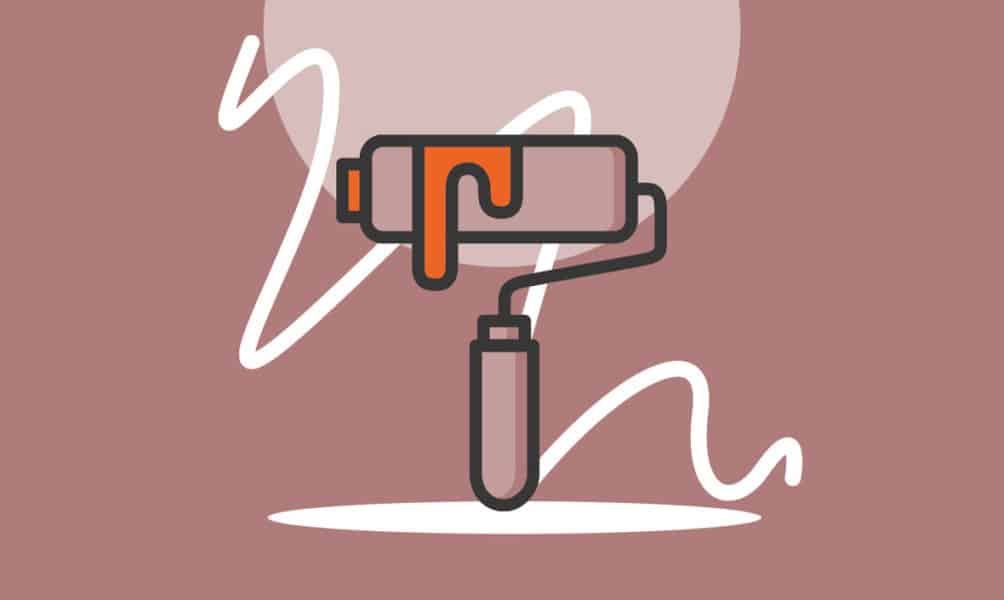

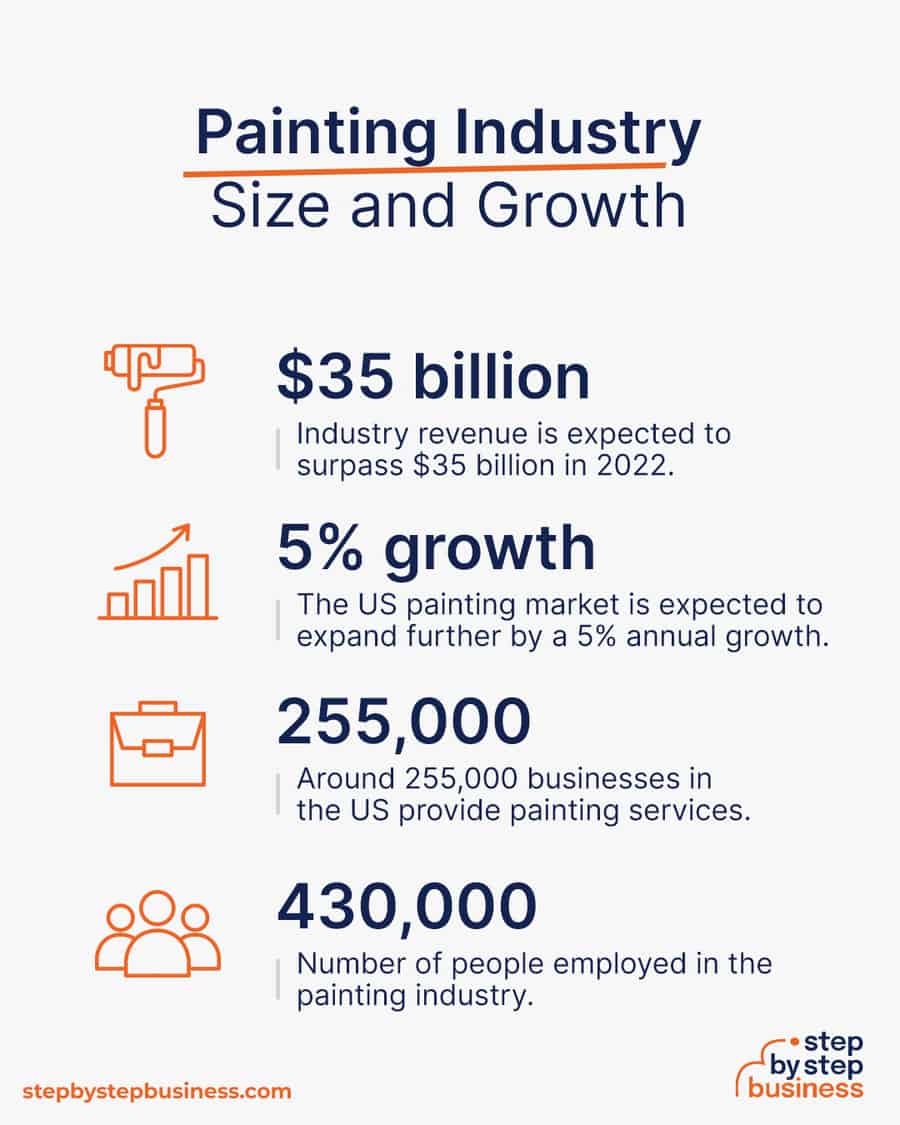
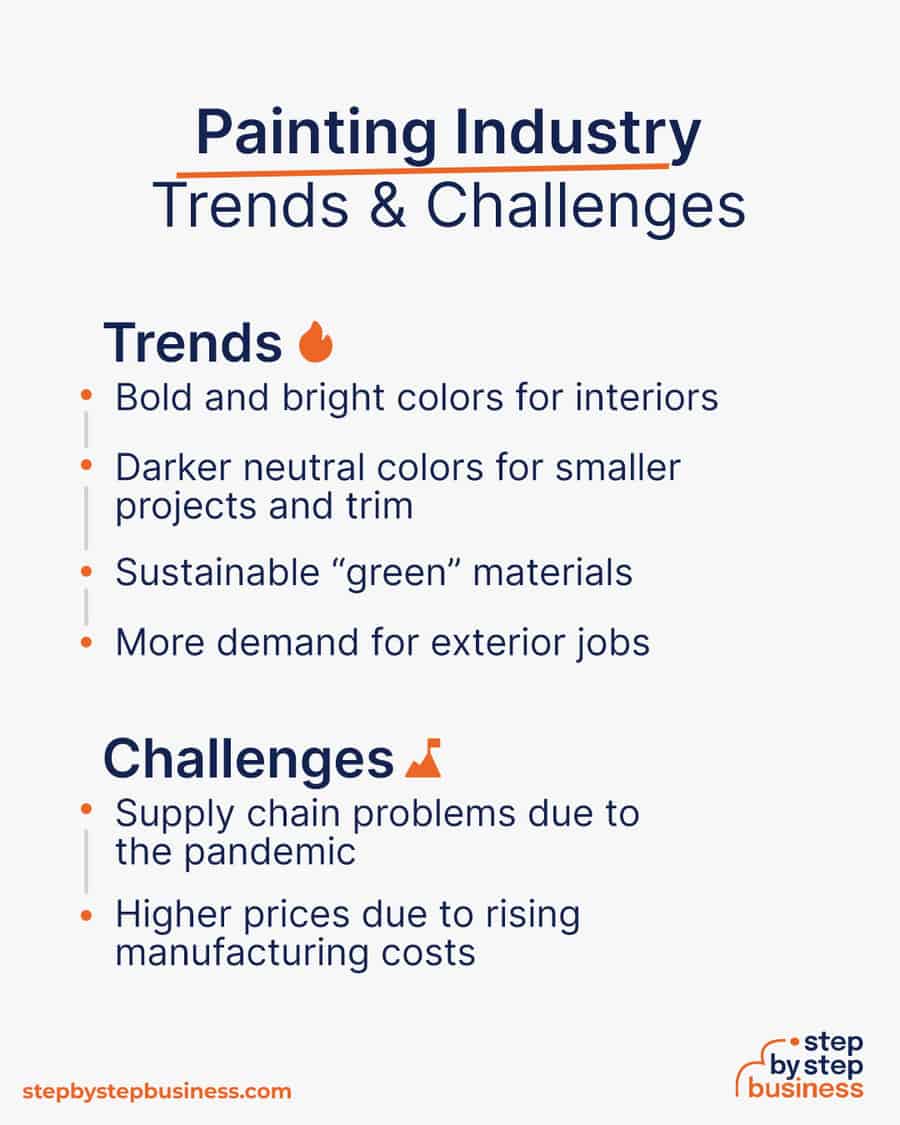

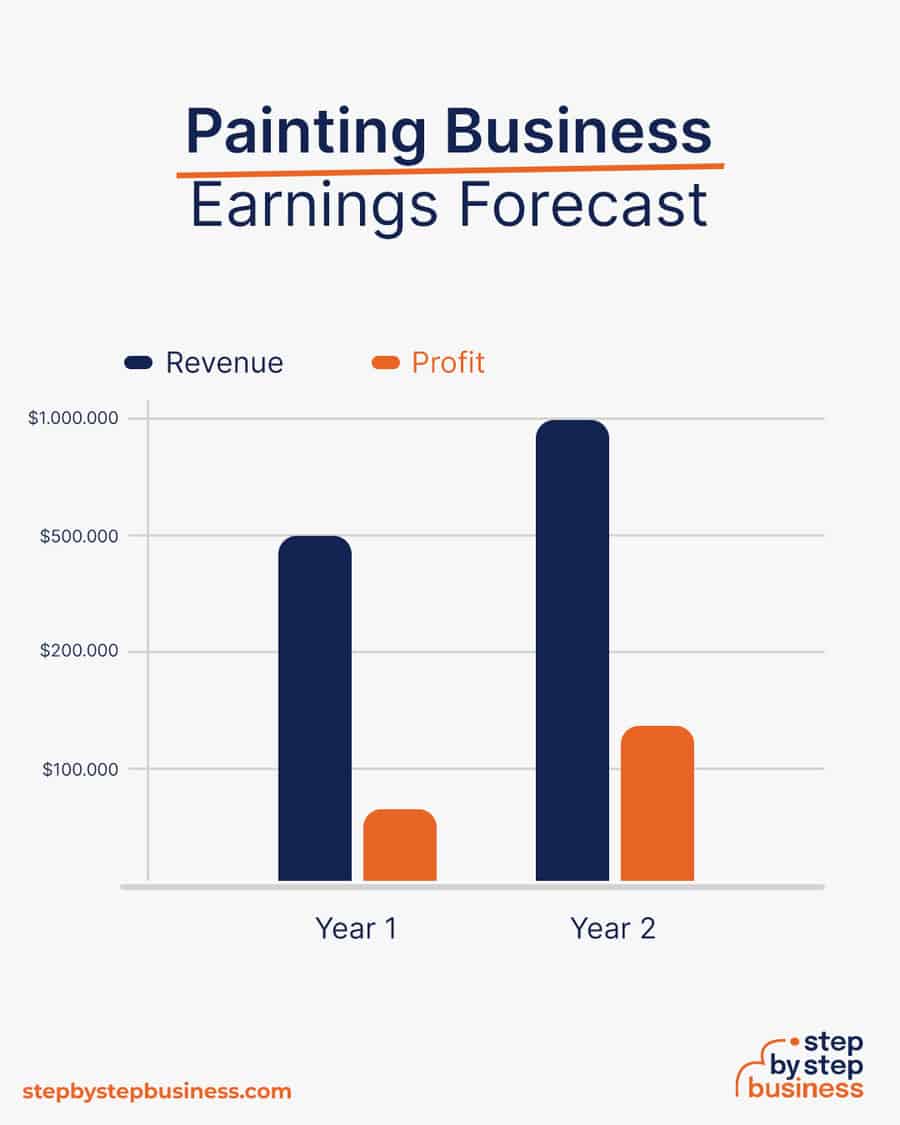




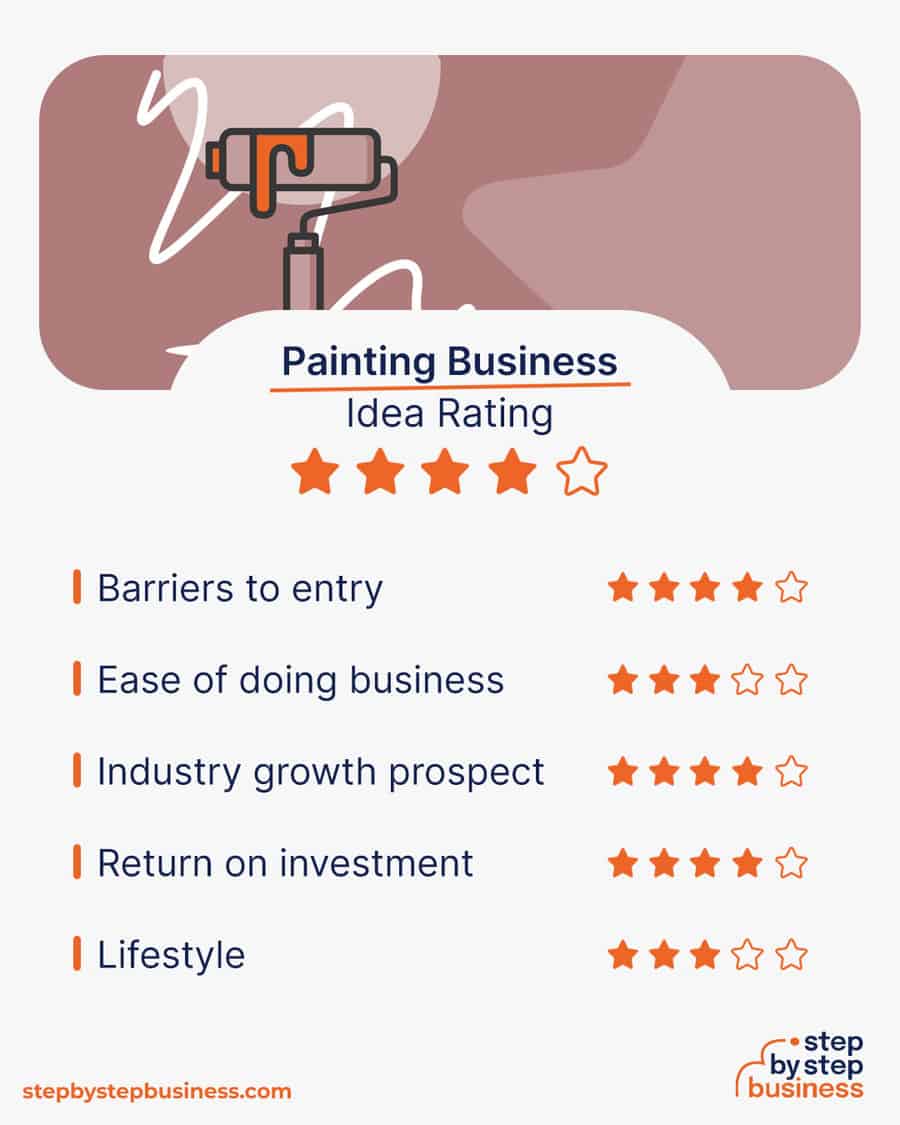













Comments